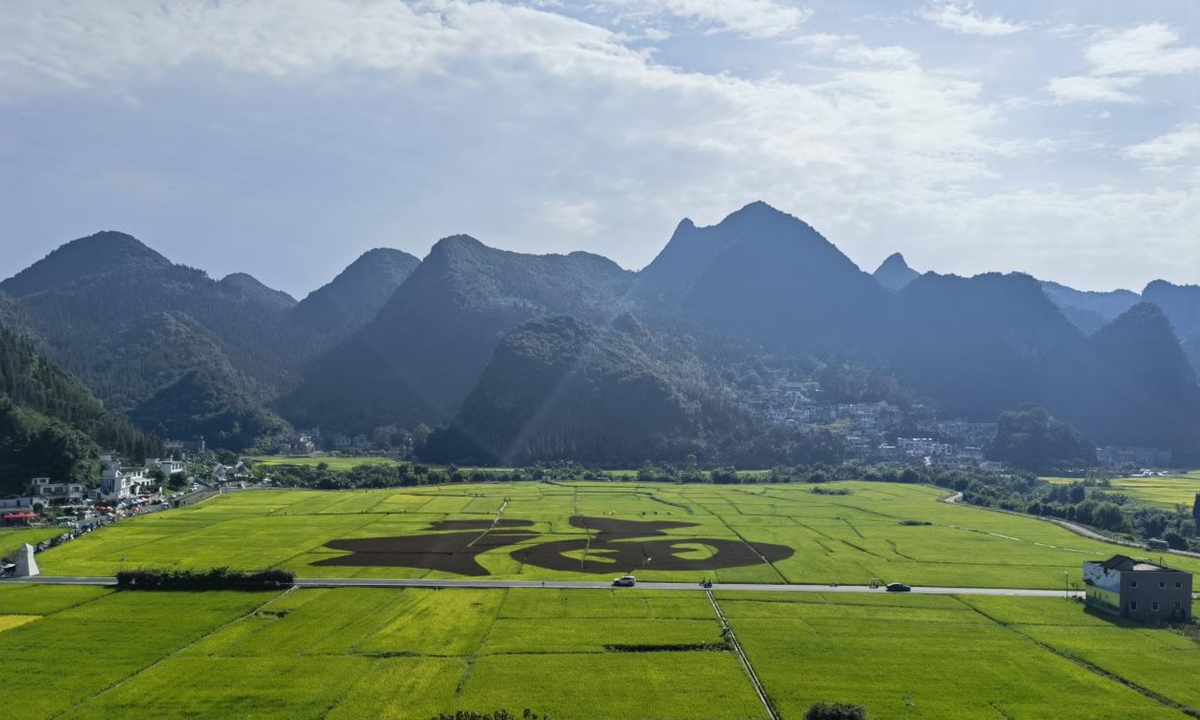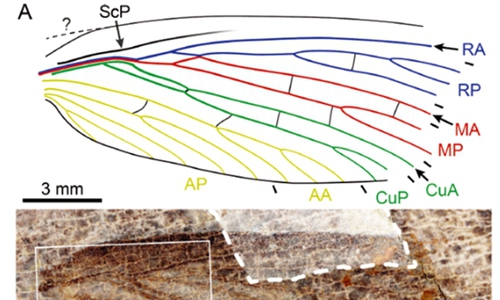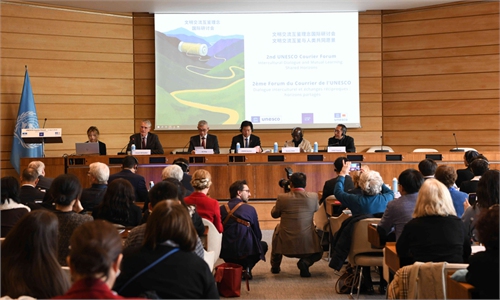ARTS / CULTURE & LEISURE
Xingyi UNESCO geopark, renowned for Triassic relics, opens to public

The Xingyi UNESCO Global Geopark Photo: Courtesy of the Xingyi UNESCO Global Geopark Administration
The Xingyi UNESCO Global Geopark was officially opened to the public during the opening ceremony of the 2024 Annual Conference of China UNESCO Global Geoparks and 20th Anniversary Symposium of the Global Geoparks Network held in Southwest China's Guizhou Province, addressing a significant gap in the study of Triassic geological relics.Covering an area of 1,456 square kilometers in Xingyi of the Bouyei-Miao Autonomous Prefecture in Guizhou, the geopark boasts a wealth of paleontological fossils, unique karst topography, and rich cultural heritage.
Among its notable discoveries is the Keichousaurus, the first marine reptile fossil found in Asia, providing invaluable insight into early marine fossils and the evolution of reptiles.
Zheng Xiumin, director of the Xingyi UNESCO Global Geopark Museum, told the Global Times on Tuesday that the museum has launched four educational projects focusing on popularizing knowledge about paleobiology, fossil collection, restoration, and model-making.
These initiatives include hands-on activities for children and students, allowing them to learn through creating fossil imprints alongside prominent specimens like Keichousaurus.
"After the UNESCO announcement, visitors from major cities such as Beijing, Shanghai, and other regions like South China's Guangdong Province significantly surged in July and August, comprising 90 percent of total attendance," Zheng said.
Beyond its fossils, the geopark features diverse geological landscapes, including sinkholes and limestone peaks, housing one world-class and five national significant geological relics.
Additionally, the region is home to 26 Chinese ethnic groups, particularly the Bouyei.
Historical contributions include numerous national intangible cultural heritages like the lion dance.
UNESCO Global Geoparks are unified geographical areas where sites and landscapes of international geological significance are managed with a holistic approach to protection, education, and sustainable development.



